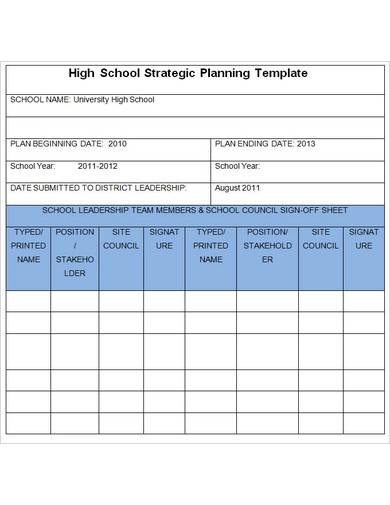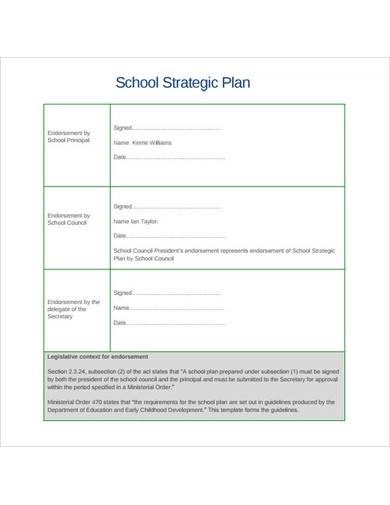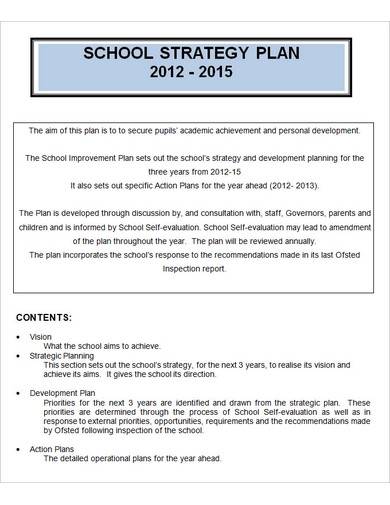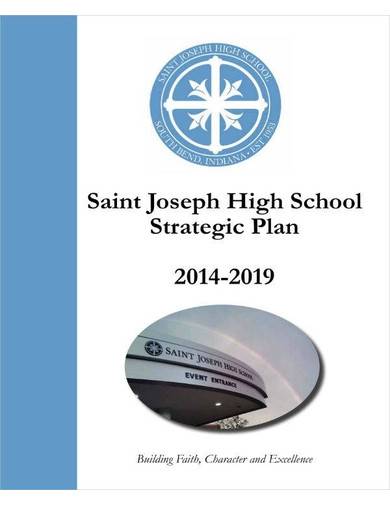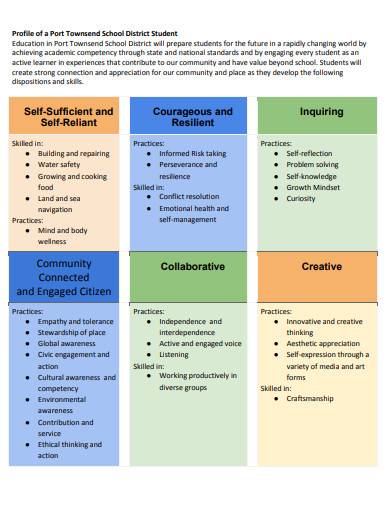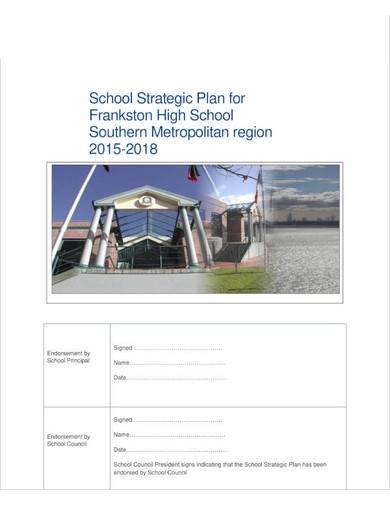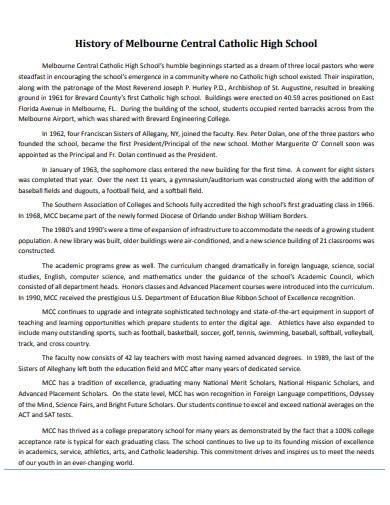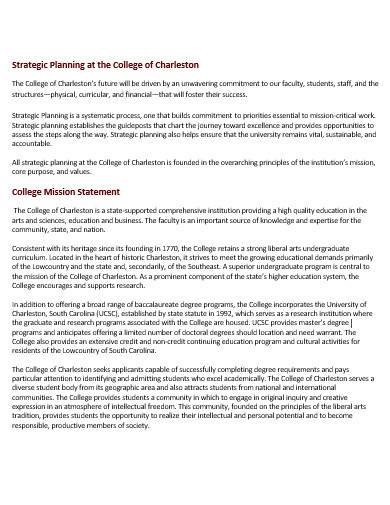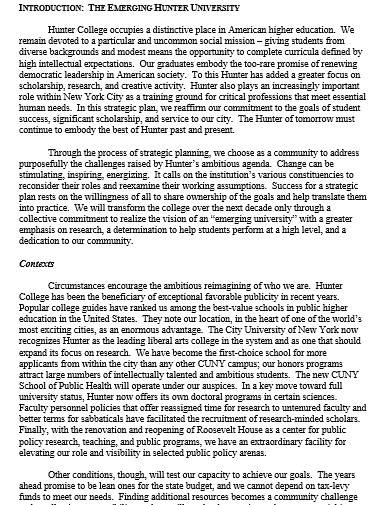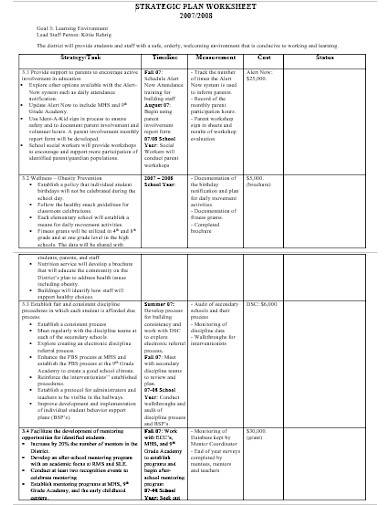Schools gear up students for a lifelong learning process. This lifelong responsibility is not an easy ladder to climb up. As an institution, you have to have concrete operational plans and goals that will drive you up towards a ready future. To do so, characterizing key aspects and flourishing it with carefully crafted school plans is a crucial step. It’s not all about achieving perfection; it’s about preparedness when the best or worst comes to show.
FREE 15+ Sample School Strategic Plans
1. Sample School Strategic Plan
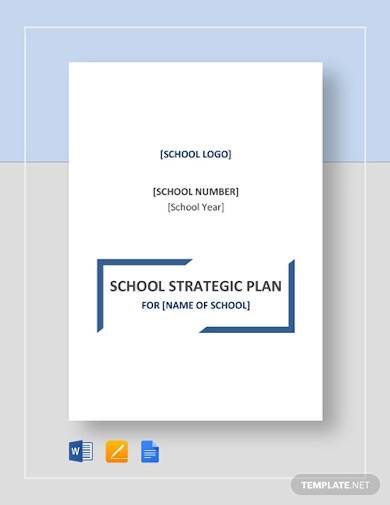
2. Educational Strategic Plan Template
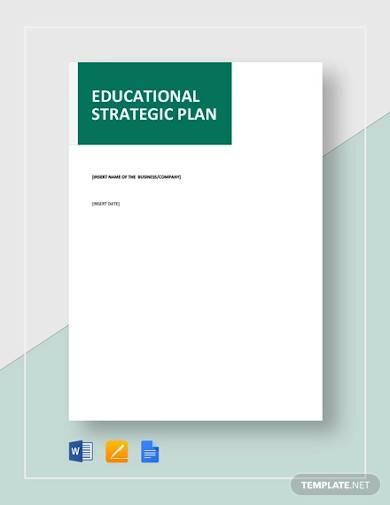
3. Sample University Strategic Plan

4. Academic Strategic Plan Sample
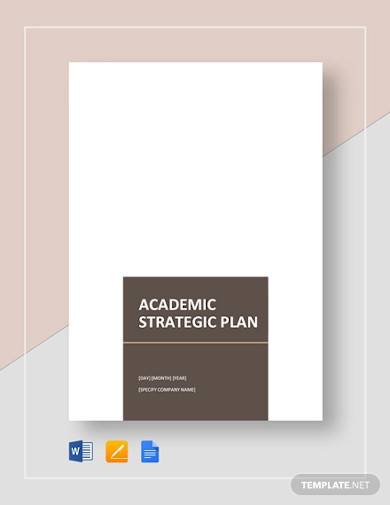
5. Blank School Strategic Plan
6. Formal School Strategic Plan
7. Sample School Strategy Plan
8. Sample High School Strategic Plan
9. District Strategic Plan Sample
10. Basic High School Strategic Plan
11. 5 Year Strategic Plan Sample
12. Simple High School Strategic Plan
13. Sample Strategic Plan Template
14. Schools Academic Year Strategic Plan
15. School Strategic Plan Final
16. Sample School Strategic Plan Worksheet
What Is a School Strategic Plan?
Forbes defines a strategic plan as an internal component that guides management with decision making. It is a detailed document that could take months to create, which should include SWOT Analysis (strengths, weaknesses, opportunities, and threats), competitor or customer trends, mission, vision, business goals, among other essential parts or data.
In a fast-changing and competitive environment, schools must give the best education and learning resources to students that come and go. A strategic plan is a tool that allows educational institutions to study past achievements or mistakes, assess the present situation, and foresee future projects, agreements, collaborations, and innovations.
How To Make a School Strategic Plan
Yes, you may already have written a foolproof business plan, but have you considered writing financial plans, human resource frameworks, organizational charts, or perhaps strategy plans? If not, the steps presented below are tips and suggestions on how you can make a strategic plan tailored for an educational institution, be it on a kindergarten, primary school, or university level.
1. Step Out of Your Comfort Zone
Research is an important part of a plan outline; it is always better to equip the brain with related knowledge and data. However, it is always better to step out of your comfort zone when creating a strategy plan, as suggested by former dean Roger Martin of the Rotman School of Management at the University of Toronto. In his Harvard Business Review article, he stated that using a framework from other institutions might result in an unsuccessful strategy.
Stay ahead from the competition by employing new ways of analysis and risk assessment. “True strategy is about placing bets and making hard choices. The objective is not to eliminate risk but to increase the odds of success,” Martin added.
2. Identify Short-Term and Long-Term Goals
An academic year runs for ten months. As the author/s of the strategy plan, always give thought to the time frame for continuous improvement. Students come and go—they enroll then eventually graduate. Don’t go wasting hundreds of hours planning on something not feasible. Rather, create an education template that you can easily customize in a different semester or academic year. Jump back to the basics, and list down your strategic goals then create your own strategic plan framework.
3. Focus on Key Stakeholders—the Students
Corporations or organizations have varying strategies to keep operations afloat by conducting target market analysis and customer preferences. Similarly, schools must also draft plans according to the needs of the students and teachers as well. For example, the medium of instruction for subjects such as mathematics, sciences, and linguistics change over time, this calls for new books, software, instruments, and others. With innovation comes expenses; it’s better to ready the school with a strategy in keeping up with everything. After all, the students deserve the best learning materials.
4. Consult the School Board
Sit down with the key players in your institution and present a visual strategic plan through info-graphics and overviews. Gather suggestions, addenda, and notes to strengthen the strategic plan pillars. Budget wise, note that the school strategic plan would not come to fruition without financial resources. Couple your success plan with a workable budget plan and seek approval from the board.
5. Update and Revise
Creating a future plan requires time and effort. But, once you have completed the task, don’t hesitate to update and revise. New strands of data or information might surge, so it’s always better to amend the existing school operational plan. Be open to new possibilities and anticipate change, which can happen tomorrow or in a 3-year timeframe. A strategic plan is not a mere poster hung on a wall; it is a document that needs to be regularly assessed.
FAQ’s
What are the five key components of a strategic plan?
Write every detail comprehensively through a where-to-play and how-to-win framework. Establish a good plan with the help of these critical components;
- Mission and Vision Statement
- Strategic Plan Overview or Core Values
- Competitor, Stakeholder, and Internal Assessments
- SWOT Analysis
- Operational Strategies and Tactics
Why is strategic planning important in education?
The APQC (American Productivity & Quality Center) states that strategic planning is changing school districts. Thorough planning is imperative in educational institutions because it gives a clearer path towards focus and improvement. It also builds bridges between stakeholders and the community—insightful feedback and reporting thrust the school towards better relations. Lastly, efficient planning allows room to save up on money through wise funding and cash flow forecasting and monitoring.
What are the four phases of strategic planning?
The first part in strategic planning is a formulation which entails data gathering and analyzing. Then comes the implementation and execution of what was constructed in the first phase. During the second phase, the implementing body must take note of changes, inputs, and details to proceed to the third phase—evaluation and assessment. In the third phase, you have to identify loopholes and areas for improvement based on the notes you took from the observation. It’s just like the scientific method but put in a simpler context. Modification and amendment is the final phase of the planning process. The previous steps should give you ample ideas on what part of the strategic plan needs fixing, maintaining, or complete editing.
The overall process is a cycle because you can always repeat each phase. It is just a matter of willingness to come up with the most strategic steps for your respective institution.
Crafting a school strategic plan is not an overnight homework; it is a project implementation that requires a lengthy time frame. If you want a better shot at success, then you need to be detail-oriented, meticulous, open-minded, and inquisitive. As mentioned in the article, you have to step out of your comfort zone to arrive at better strategies. In reference to The Balanced Scorecard, you certainly would not like to join the 90% of institutions or organizations that fail to execute their strategy successfully.
Related Posts
FREE 9+ 30-Day Marketing Plan Samples in PDF | MS Word | Apple Pages | Google Docs
FREE 3+ Sales Team Action Plan Samples in PDF | MS Word | Apple Pages | Google Docs
Marketing Plan For Small Business Samples
FREE 7+ Fashion Business Plan Samples in PDF
FREE 10+ Sprint Planning Samples In MS Word | Google Docs | PDF
FREE 10+ Wedding Planning Samples in MS Word | Apple Pages | Powerpoint | PDF
FREE 9+ Monthly Study Planner Samples in PSD | Illustrator | InDesign | PDF
FREE 9+ Sample Curriculum Planning Templates in PDF | MS Word
FREE 10+ Teacher Development Plan Samples in MS Word | Google Docs | Apple Pages | PDF
FREE 10+ Basketball Practice Plan Samples in PDF
FREE 12+ School Business Plan Samples in PDF | MS Word | Apple Pages | Google Docs
FREE 7+ Client Strategic Plan Samples in PDF | MS Word
FREE 11+ Trucking Business Plan Templates in PDF | MS Word | Google Docs | Pages
FREE 7+ Small Hotel Business Plan Samples PDF | MS Word | Apple Pages | Google Docs
FREE 14+ Bakery Business Plans in MS Word | PDF | Google Docs | Pages

